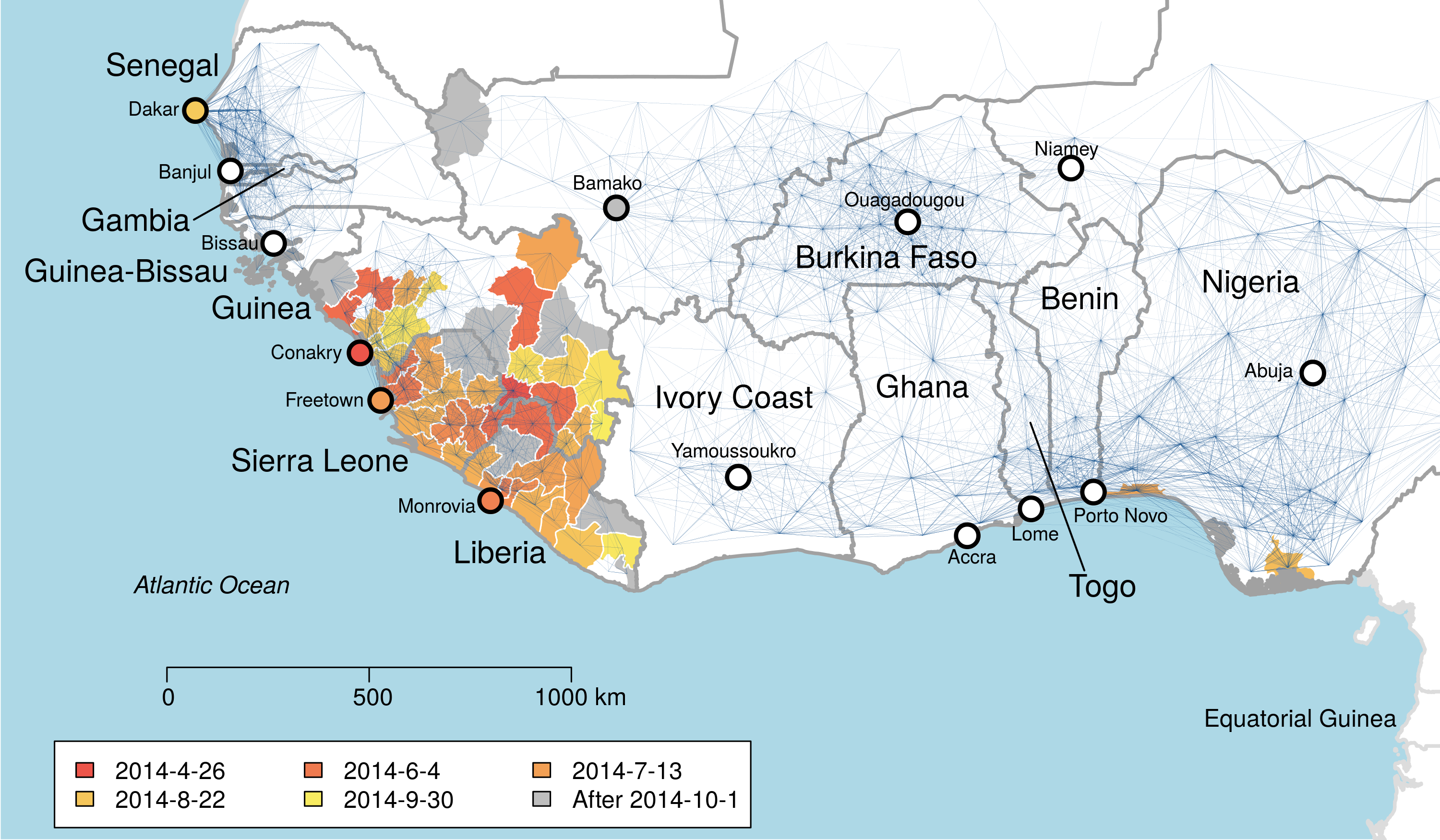Part of my computational research examines methods for modeling spread on networks. This work applies to several pathogens, including white-nose syndrome in bats, Ebola in central and west Africa, and SARS-Cov2. By modeling the epidemics on a network, we can better capture the pattern of spread, identify key factors influencing that pattern, and produce effective forecasts. My current work addresses two important problems: simplifying the complex networks that often result from these models and coupling processes at the local scale to macro-scale spread on the network.
 Transmission risk in West African Ebola outbreak (Kramer et al. 2016)
Transmission risk in West African Ebola outbreak (Kramer et al. 2016)
Macroscale spread of disease
Publications
SD Meyers, AM Kramer, ME Luther.
Florida at risk: maritime connectivity during the COVID-19 pandemic.
Florida Scientist: 85:3⁄4, 2023.
JE Vinson, NL Gottdenker, LF Chaves, RB Kaul, AM Kramer, JM Drake, RJ Hall.
Land reversion and zoonotic spillover risk.
Royal Society: Open Science: 9:220582, 2022.
AM Kramer, CS Teitelbaum, A Griffin, JM Drake.
Multiscale model of regional population decline in little brown mats due to white-nose syndrome.
Ecology and Evolution, 9:8639-8651, 2019.
JP Schmidt, AW Park, AM Kramer, BA Han, LW Alexander, JM Drake.
Spatiotemporal fluctuations and triggers of Ebola virus spillover.
Emerging Infectious Diseases: 23:415-422, 2017.
AM Kramer, JT Pulliam, LW Alexander, AW Park, P Rohani, JM Drake.
Spatial spread of the West Africa Ebola epidemic.
Royal Society: Open Science: 3:160294, 2016.
BA Han, AM Kramer, JM Drake.
Global patterns of zoonotic disease in mammals.
Trends in Parasitology: 32:565-577, 2016.
JM Drake, RB Kaul, L Alexander, S O’Regan, AM Kramer, et al..
Ebola cases and health system demand in Liberia.
PLOS Biology: 10.1371, 2015.
SP Maher, AM Kramer, JT Pulliam, MA Zokan, SE Bowden, HD Barton, K Magori, JM Drake.
Spread of white-nose syndrome on a network regulated by geography and climate.
Nature Communications: 3:1306, 2012.